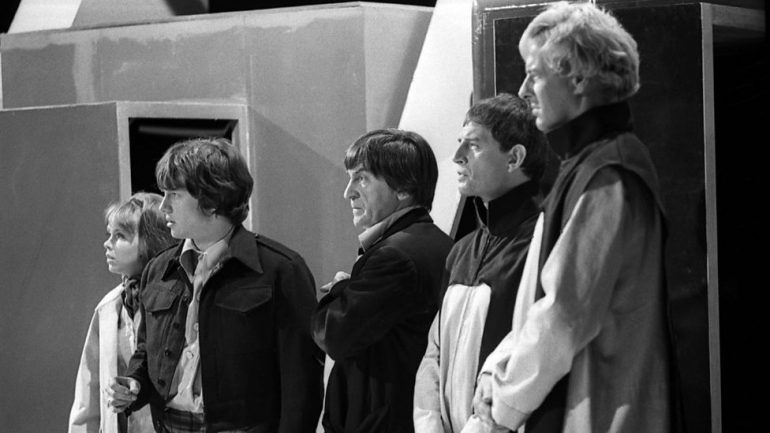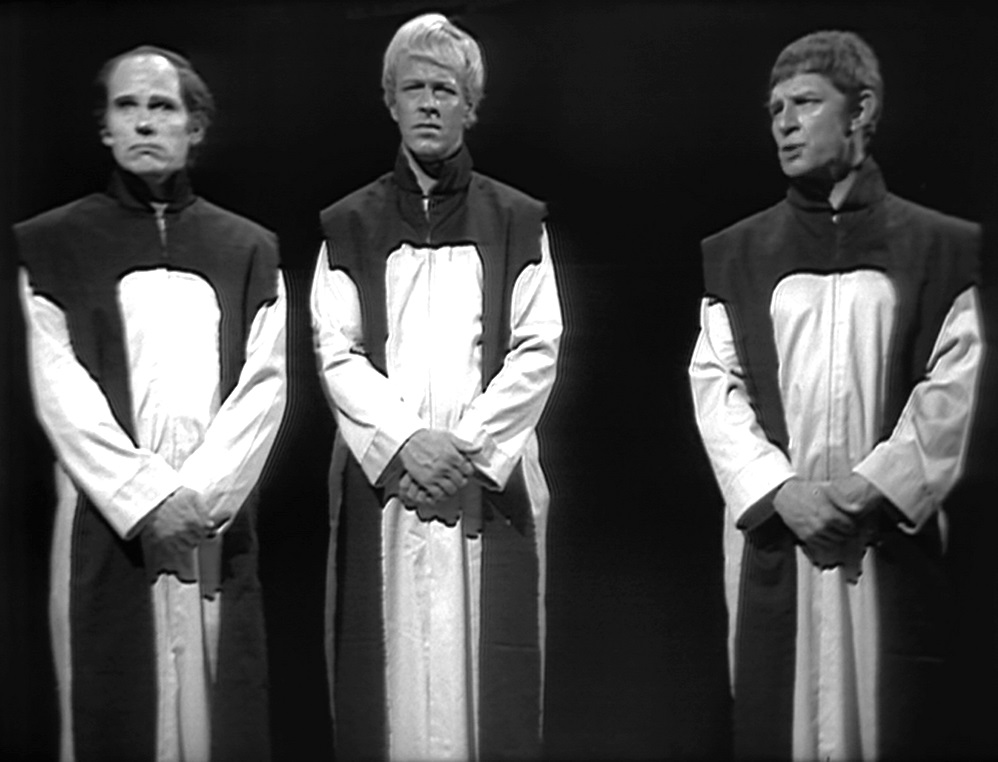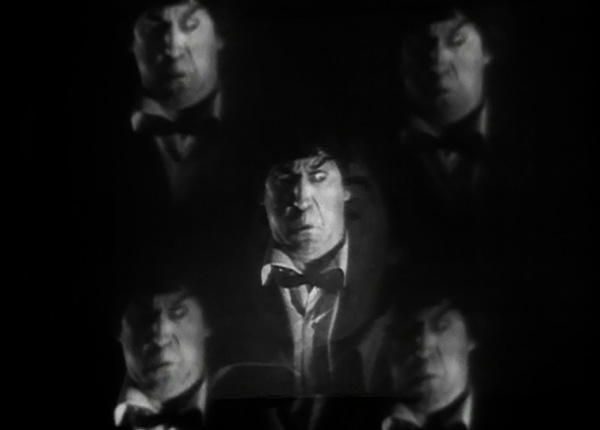A talented filmmaker, editor and Doctor Who fan has taken it upon himself to recreate one of the biggest gaps in Time Lord history – the second Doctor Who regeneration!

“The time has come for you to change your appearance, Doctor, and begin your exile.” These words closed the Second Doctor’s era as the eponymous Time Lord was sentenced to death by his own people and sent to Earth in the 20th century, with all knowledge of how to pilot the TARDIS blotted from his memory.
But unusually for the series, the second Doctor Who regeneration did not include a transition scene. Patrick Troughton ended his tenure by tumbling into a dark vortex screaming “no, no!” And by the time the series returned in 1970, his face had already changed; the first episode of ‘Spearhead from Space’ showed the newly-regenerated Doctor falling headlong out of the TARDIS, unconscious.
And so the events that took place immediately after the second Doctor Who regeneration have long been the subject of speculation, with some even pondering if Jo Martin’s Fugitive Doctor emerged in the missing time.
But one Doctor Who fan and filmmaker (The Confession Dial on X) has created a brand new sequence to plug the gap between the end of ‘The War Games’ part 10 and ‘Spearhead from Space’ part one using a combination of footage, CGI and deep fakery.
Check it out…
Canny viewers may be able to discern where some of the footage came from. The scenes of the Second Doctor sitting in the chair have been repurposed from the first episode of ‘The Mind Robber,’ whilst the scenes of the TARDIS landing on Earth have been reworked from ‘Spearhead from Space.’ Interestingly, the shot of the TARDIS’ materialisation appears to have been made from scratch, replacing the model shot that was used in the original story.
This new version of the second Doctor Who regeneration also includes a cheeky nod to a well-known continuity conundrum. When the TARDIS lands, the console’s yearometer glitches, unable to establish whether the Doctor has arrived in 1970 or 1980. This is because it was never fully established when the Doctor’s exile took place; the UNIT adventures were meant to be set in the near future – as in, ‘the day after tomorrow’ – but the precise years were never given, leading to many a continuity guff in the stories that followed.
Indeed, the series itself referenced this confusion in the later adventures. For example, Kate Lethbridge-Stewart mentioned in ‘The Day of the Doctor‘ that the Doctor’s time with UNIT may have taken place in the 70s or 80s “depending on the dating protocol.”
But why does this gap in the second Doctor Who regeneration even exist? Well, in 1969 Doctor Who was at something of a crossroads. Plans had been set in motion to cancel the programme completely; the viewing figures had dwindled, Patrick Troughton had expressed a desire to leave, and there were other factors such as the BBC’s inability to use the Daleks, as the copyright was shared with Terry Nation who was trying to launch a spin-off series in the States.
So when the BBC came to film the second Doctor Who regeneration, the future was still uncertain. Patrick Troughton’s replacement had yet to be cast, so there was no actor for him to change into. You will notice that the Second Doctor is shown a range of potential faces to regenerate into in ‘The War Games,’ and none of them resemble Pertwee.

Interestingly, this is not the only time that a Doctor Who regeneration has been instigated without both of the actors being present. Colin Baker regenerated into Sylvester McCoy without Colin Baker being in the studio. Similarly, Christopher Eccleston and David Tennant filmed their regeneration scene weeks apart, and Paul McGann filmed his regeneration without John Hurt. Then there was John Hurt who filmed his regeneration without Christopher Eccleston, and Jodie Whittaker who filmed hers without David Tennant. Are you keeping up?! Basically, these things have become easier to fake over the years, particularly with the dawn of CGI. But it wasn’t so easy back in 1969.
But thankfully, the second Doctor Who regeneration did not mark the end of the show, and Doctor Who did not finish with Patrick Troughton swirling into a vortex. The truth is, the BBC could not think of a suitable replacement for the programme, despite having asked key writers such as Terrance Dicks to devise an alternative. So Doctor Who was greenlit for another season in 1970, and Jon Pertwee was cast as the next Time Lord.

The show did, however, need to curb its spending. Doctor Who was a particularly costly programme to make, mainly because of the need to build alien spaceships and props on a weekly basis. So the idea of an enforced Doctor Who regeneration and exile was mainly financial; the BBC reasoned that it could produce the series more cheaply if it set all of the stories on Earth and filmed Doctor Who on the streets.
In hindsight, it is incredible to think that, these days, sequences like the one made by The Confession Dial can be produced relatively inexpensively by independent creators, even if they do require a huge investment of time. Perhaps, one day, the technology will be such that it will make the recreation of other ‘missing’ Doctor Who sequences (or even missing Doctor Who episodes) a much cheaper and simpler endeavour.
In the meantime, what do you think of the idea of using CGI and deep fake technology to create new ‘old’ Doctor Who? And what are your theories about the second Doctor Who regeneration? Let me know in the comments below.
For more about the rules of Doctor Who regeneration, see our handy guide here.









The Fugitive Doctor was introduced to set up the revelation in The Timeless Children of Pre-Hartnell Doctors and their service to Division. The Fugitive Doctor being 6B wouldn’t make any sense narratively because why would Chris introduce a mysterious forgotten Doctor in Fugitive of the Judoon, reveal forgotten Pre-Hartnell Doctors in the finale, for the forgotten Doctor introduced in Fugitive of the Judoon to really have no relation to what was revealed, she was clearly introduced to set up the reveal and develop it in Series 13. If she was 6B then the majority of Flux wasn’t developing the Timeless Child revelation, it was developing Season 6B, a Post-Hartnell plot thread that was never in Fugitive of the Judoon or The Timeless Children.
In universe it also doesn’t make sense that the Fugitive Doctor is 6B because the reason Tecteun mind-wiped the Doctor and regressed them into a child was to take away all knowledge of Division from them, Tecteun literally tried to destroy the universe when the Doctor rediscovered Division, so it makes no sense that she’d rehire the Doctor after only two incarnations since the mind-wipe, which would expose Division to the Doctor. We know that the Fugitive Doctor was aware that she was working for the Division as seen in Once, Upon Time, so Fugitive being 6B just falls apart. People only think that because her TARDIS was disguised as a Police Box, but this is Doctor Who we’re dealing with, it’s contradictory, wibbly wobbly timey wimey and crazy, it’s not impossible that An Unearthly Child wasn’t the first time. Also if it was disguised as anything other than a Police Box when the 13th Doctor dug it up, she and us (audience) wouldn’t know that it’s her TARDIS.
“Interestingly, this is not the first time that a Doctor Who regeneration has been instigated without both of the actors being present…”
I think you mean “not the *last* time”, there – it was the first, and all the examples given came after it.
I think we do! And didn’t. And might do again. Complicated business, time travel.
Interesting. I still like the old regeneration better. I think that using the fire look is cheap. Up until the 9th regeneration it was different each time. I liked the differences.